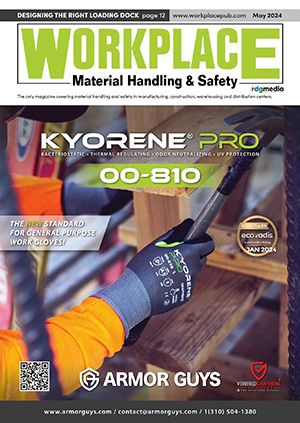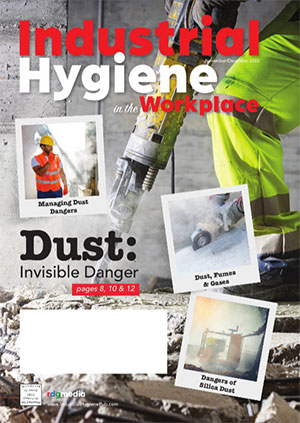Bins and Baskets for All Storage Needs
Debra Schug, Contributing Writer
 Product stocking and storing can be one of the most stressful aspects of warehouse management. Storing small parts and items can easily be forgotten about, even with the most organized systems. But, when those products are needed, they have to be easily found and readily transported.
Product stocking and storing can be one of the most stressful aspects of warehouse management. Storing small parts and items can easily be forgotten about, even with the most organized systems. But, when those products are needed, they have to be easily found and readily transported.
How to get organized? Getting in the right mindset is the first step. One useful manufacturing concept hails from Japan, specifically the Toyota Motor Company, called Kaizen, otherwise known as the 5s.
Getting Organized, the Kaizen Way
The “five ” or “5s” stand for sort, set in order, shine, standardize and sustain. Together, these words represent the activities organizations need to do to organize their work spaces. Sort refers to sorting through items and taking those out that are unnecessary. Set in order is the action of putting items in optimal places according to their function. Shine or sweep means keeping the work area orderly. Standardize means these actions should be established as procedures and done regularly according to schedules. Sustain means workers should take on these actions and habitually perform them without being told.
When setting up an efficient storage management system, sorting items according to how often they are needed is the first step. Plastic and metal storage solution provider Akro-Mils’ Lean Storage Guide recommends that items often used should be stored in easy reach of employees, which is part of the set in order step. Inventory levels should be reviewed to determine the appropriate type and size bin or container, keeping the work area orderly, or performing the “shine” step. Let’s pause on the 5s here and review the different types of bins and baskets used to reach an organizational goal.
Bin and Basket Materials and Features
First, there are materials of storage containers to consider, the main types being plastic, cardboard and wire, or a combination. The right type of material will be dictated by the job the bin or basket needs to pe rform.
rform.
“Selecting the right container is very dependent on the application/environment the container will be used in, as well as budget and features desired,” said Katie Johnson, Marketing Manager for MDI, a manufacturer of corrugated standard and custom plastic packaging solutions, production assembly and environmental services. “All have pros and cons, depending on the application and what’s important to each customer.”
If keeping costs to a minimum, cardboard can look pretty attractive and is easily customizable. However, if durability, moisture-resistance and cleanliness are among the priorities for the particular application, then a paper-based solution is not a good choice.
For durability and strength, wire mesh gets top marks, and it offers visibility into the bins and baskets to easily see what is being stored or transported. However, higher cost is definitely a factor here; with open cells, the protection it offers to environmental conditions is minimal.
Finally, plastic is a good choice for its durability and reusability. Plus, the material does not have fibers like cardboard, so can be cleaned more easily, but does cost more than cardboard. Additionally, there are organizational features of plastic bins that are beneficial.
“Plastic bins can stack and/or nest, can be hung from a louvered panel or can rest on shelving,” said Ed Granger, Director of Sales at Quantum Storage Systems. “Mesh baskets can be collapsible, so they can be easily stored when not in use.”
To meet more flexible uses, plastic-corrugated boxes can also be folded multiple times, which makes them easier to transport and store. Plus, if the environment of the storage area is wet or prone to moisture, the waterproof quality of certain plastic containers can be a big benefit, including the safety it offers  workers by maintaining its structure and integrity.
workers by maintaining its structure and integrity.
Optimizing Bins and Baskets
So now that we have a “shining” storage area, to use the Kaizen language, let’s get to standardizing how the bins and baskets are utilized. There are several organizational methods that can help a workplace run more efficiently.
First of all, the size of the containers should be considered and be an appropriate size for the application. Akro Mils suggests using storage bins that are close to the exact size of the items being stored.
Granger of Quantum Storage Systems said there are a few ways to organize a storage area. “A warehouse or facility can arrange the storage of its products in bins by: size (small parts in small bins-big parts in big bins); frequency of use (high volume picked products stored on shelving close to the dock doors, low volume picked products in the rear of the building or in pallet racks); or by color code that may indicate the high cost of the product or if the product may be fragile,” he said.
Another way to optimize a storage system is to organize your bins from within by using dividers. “Plastic bins have slots for labels and can easily be divided so that more than one part can be stored in a bin,” said Granger.
Labeling is a crucial feature for optimizing bins and baskets. No sense in having bins and baskets at all, if staff doesn’t know what’s in them. Color coding items, which Granger mentioned above, can be worked into the labeling system, especially for cardboard and wire bins and baskets. Because plastic comes in a variety of shades and hues, these types of bins and baskets lend themselves well to a color-coded organizational system.
Now that the storage system is properly in place, the fifth and final Kaizen step can be practiced to maintain all the elements of the system. However, following the right approach to selecting the best bins and baskets for a facility’s needs will make storage management more effective. Having access to the right items in an efficient and timely way will allow operations to meet customers’ needs. This will make operations run more smoothly, increasing productivity and reducing unnecessary downtime. That’s a big job for bins and baskets. WMHS



